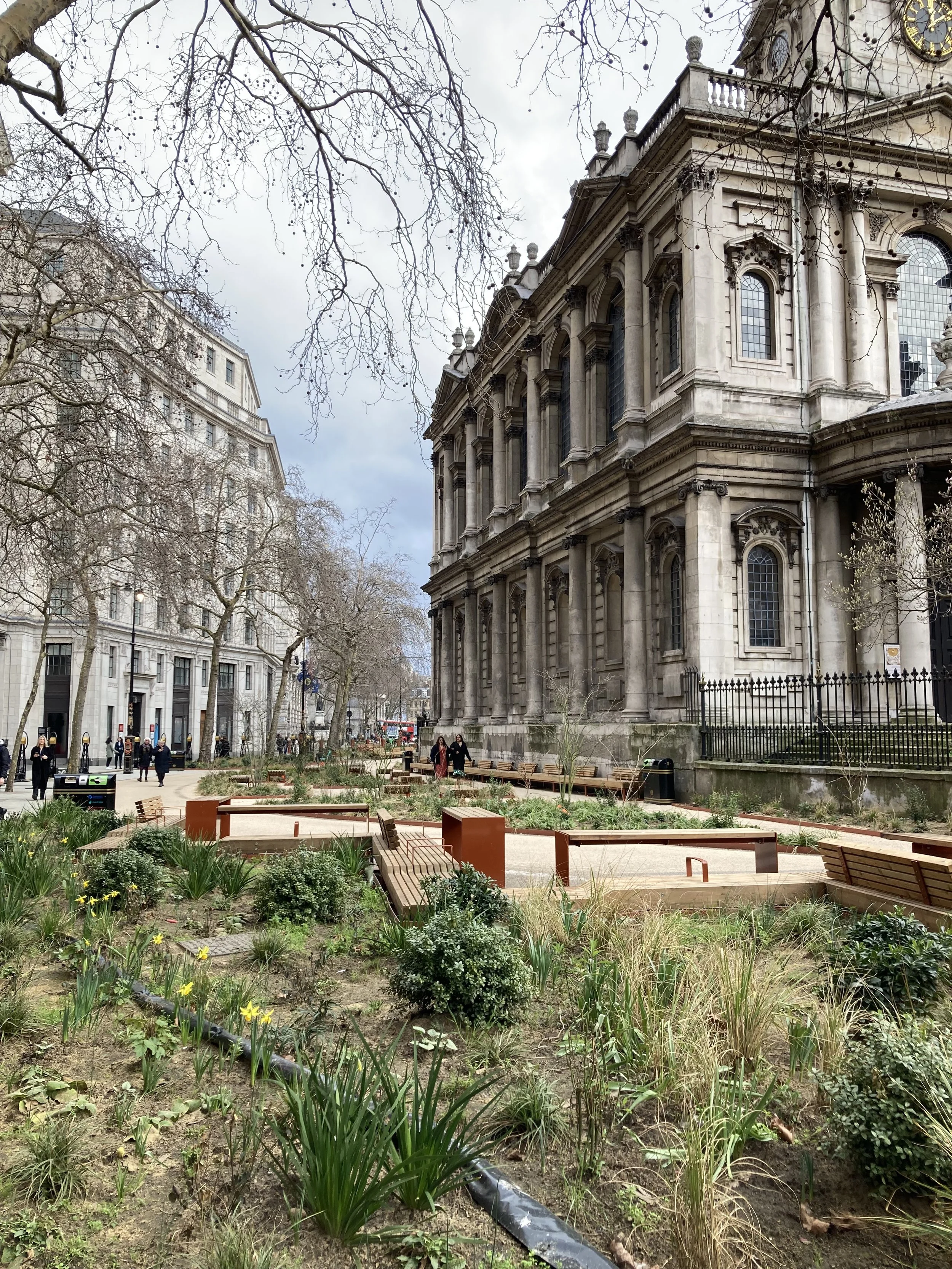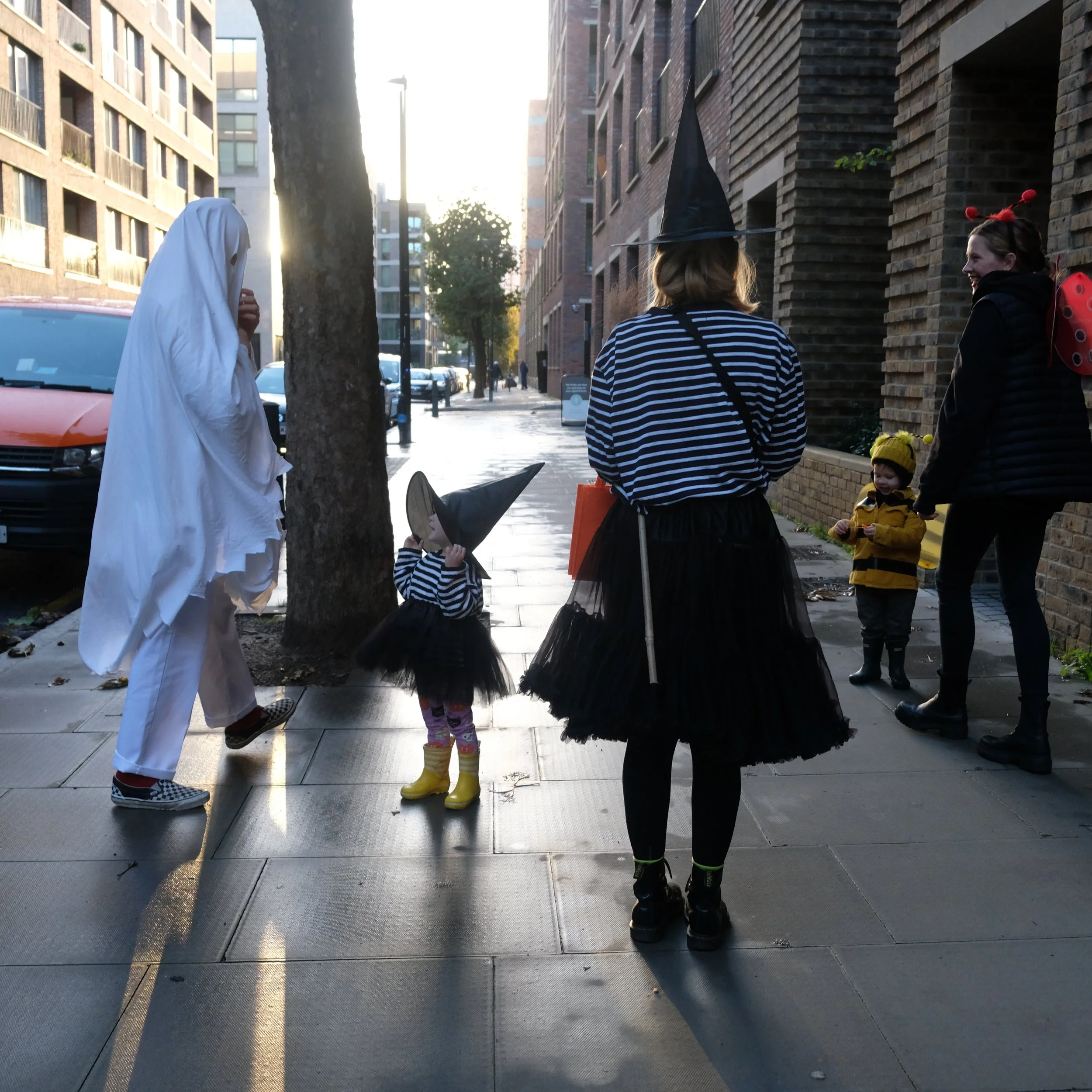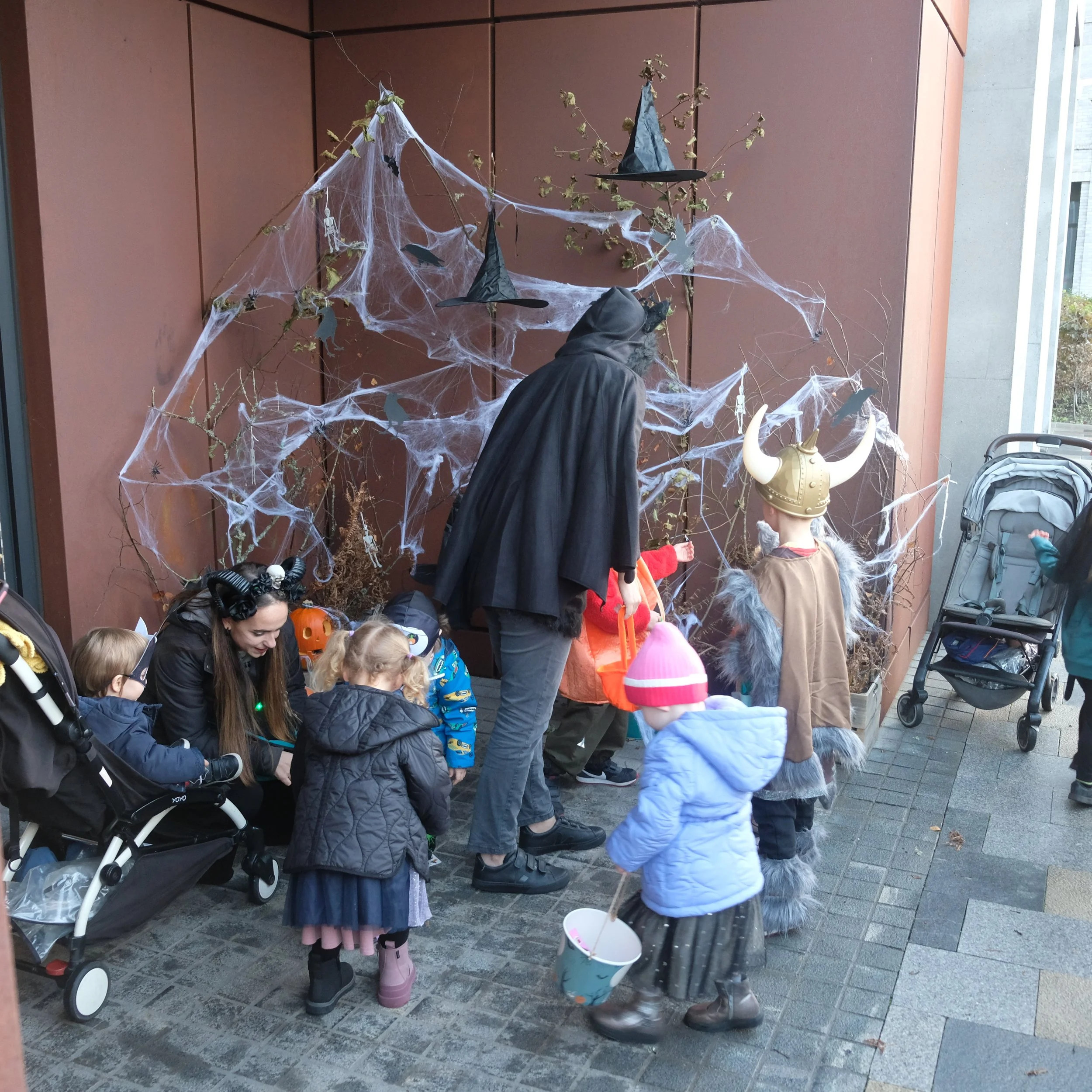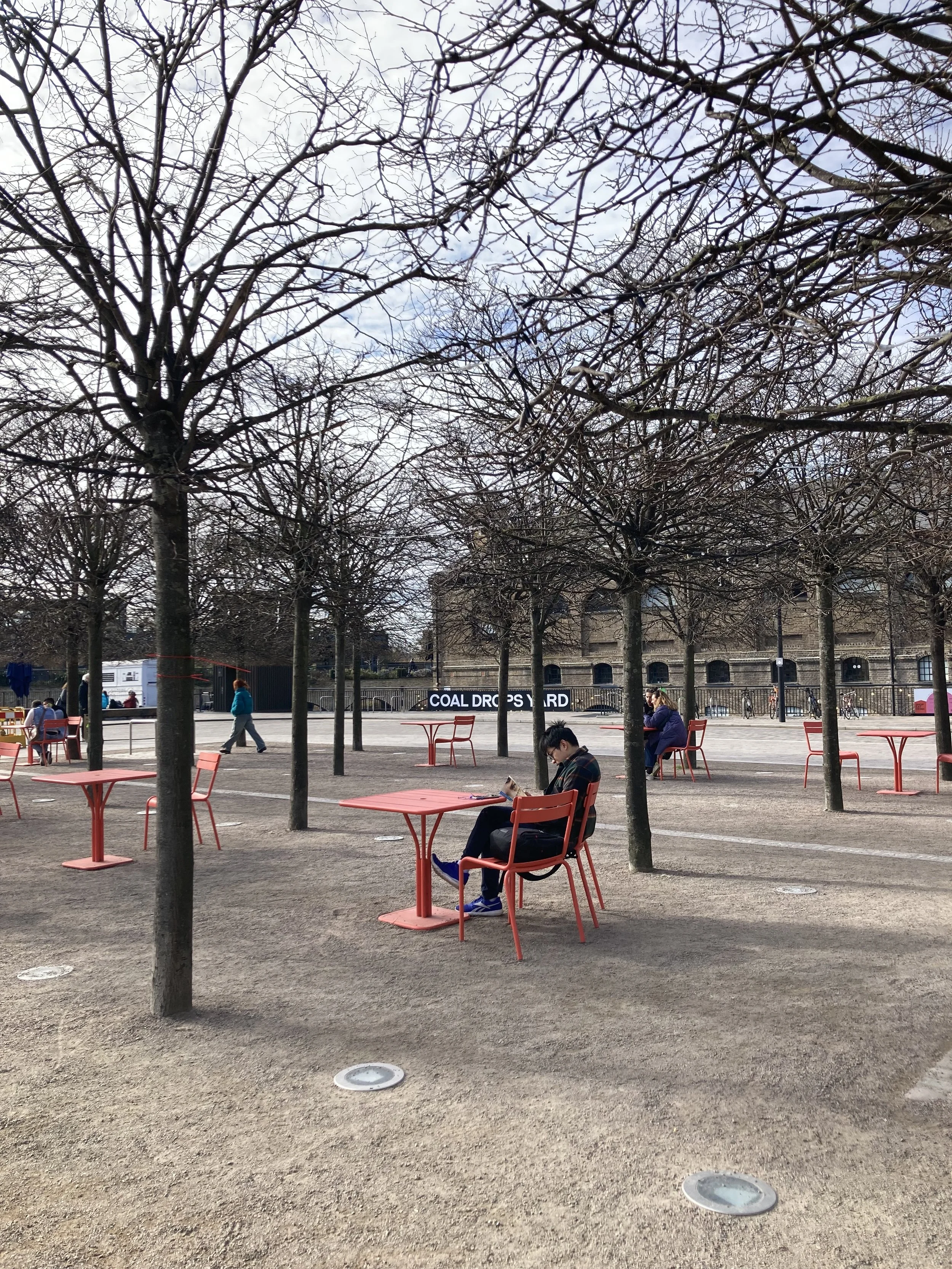Place is essentially about a sense of ownership - without this, what is left is space.
Dr Paul Keedwell, Headspace. The Psychology of City Living, London, Aurum Press, 2017
Whilst I really embrace the vision of a car-free, greener and sustainable city, the impression I had today walking along the pedestrianised Strand Aldwych it was a bit controversial and made me wondering about the suitable aesthetic of public spaces in the heart of historic London. We all agree on the principle of giving priority to pedestrian over the vehicular movement and creating pocket of social spaces within the city, but what I’m questioning is: Should the public realm project be more contextual? What is the relationship that it is creating with the buildings framing it? Are value and character of historic buildings enhanced? Isn’t the expected urban character lost and blended in a generic idea of park-like public space?
All the love I have for pumpkins and my community
1 neighbourhood
100 pumpkins
11 buildings
7 businesses,
1 public space to be activated
1 community to be brought together
I have always wondered, if we don’t leave in the dreamed townhouse, does it mean that our kids cannot enjoy the pleasure of putting some decorations on and knock the door of their neighbours for trick and treating? There was some hesitation there. Of course, everything is easier when you live in an independent house and have the freedom to dress your front door as you wish, but I really believe that a tradition can be adapted to a new way of living in denser cities.
My un-ordinary idea of a Halloween parade around Fish Island Village has become true and it was stunning. The front doors of 11 buildings were creatively dressed for the event and a volunteer for each neighbour was there welcoming the kids with lots of treats. The turnout was impressive, with about 150 people dressed up and taking part of the event and express their pride of living in the Island.
The tradition of celebrating Halloween in Fish Island, started in 2020 when I asked my neighbours to carve a pumpkin at home and bring it for display on the canal side as an opportunity for meeting and knowing each other. The idea behind this year event it was to bring Halloween back to the streets of the neighbourhood, the place where all the encounters with our residents happen daily, recreating a Halloween atmosphere around the Island and fostering a sense of place and community among the residents. The activation of the underutilised Lanterna Square - renamed Jack o Lantern Square for the event - has shown the potential of the public space as an anchor place for our community, a place where neighbours can gather and raise their voice as a whole.
The Fish Island Halloween parade has been supported by Peabody and has brought together for the first time all Fish Island Village residents and the emerging local businesses.
Kids, and adults, have carved not just pumpkins but also memories of their own neighbourhood, building a sense of belonging in a place they can call home.
Is place making successful only on private long-term ownership?
Today I attended the “Reimagining Great Estates” talk at the NLA.
The panellists shared their experience on placemaking, the importance of a long-term vision, the key role of landscape as connector of social spaces in the built environment and the importance of the engagement process.
The focus of the talk on private ownership in West London left me with some questions:
Is placemaking successful only if highly ‘curated’?
What are the principles of placemaking in residential-led projects?
Are there opportunities of placemaking in public owned land?
Is the engagement process addressing the needs of the entire community?
How much voice different age groups and minorities have in the placemaking process?



